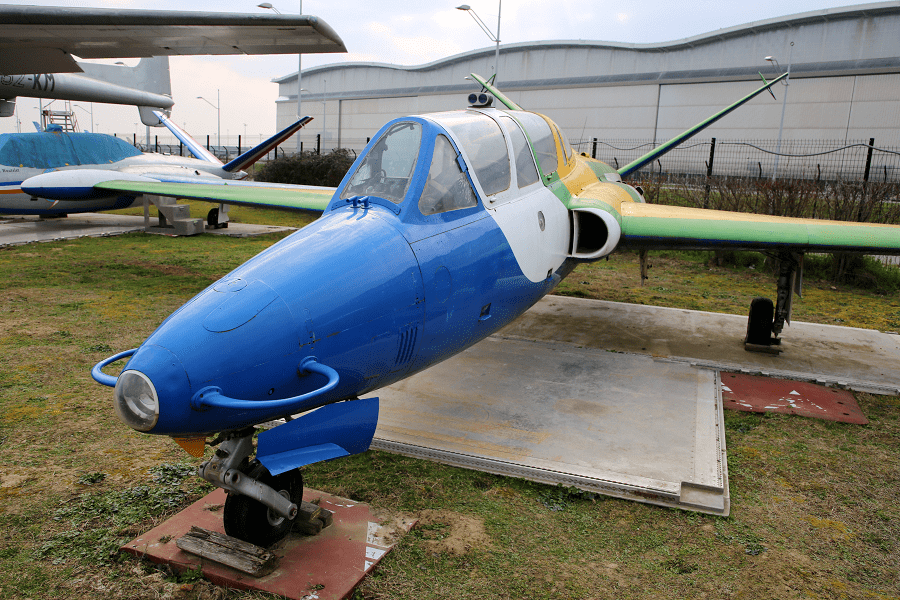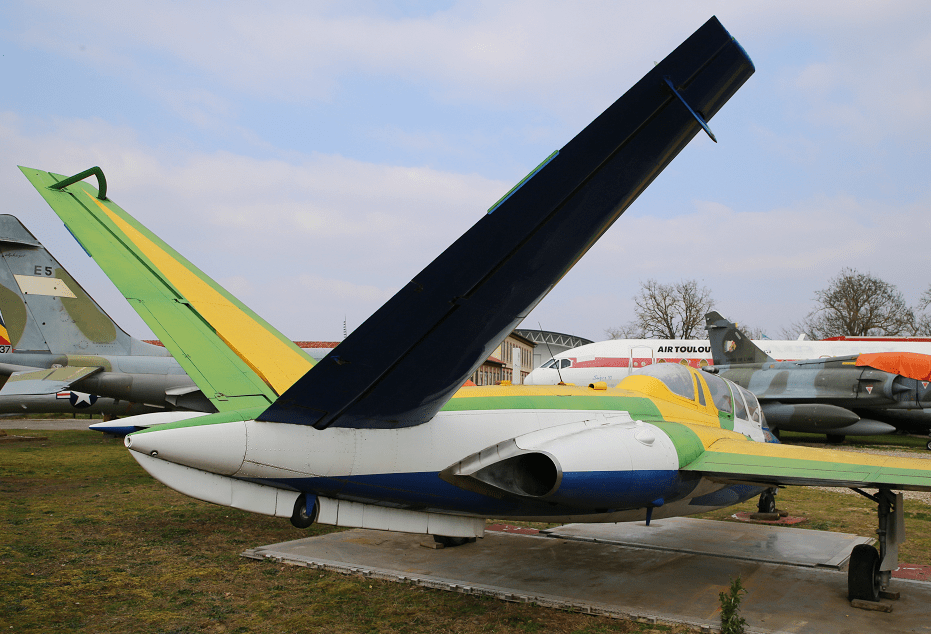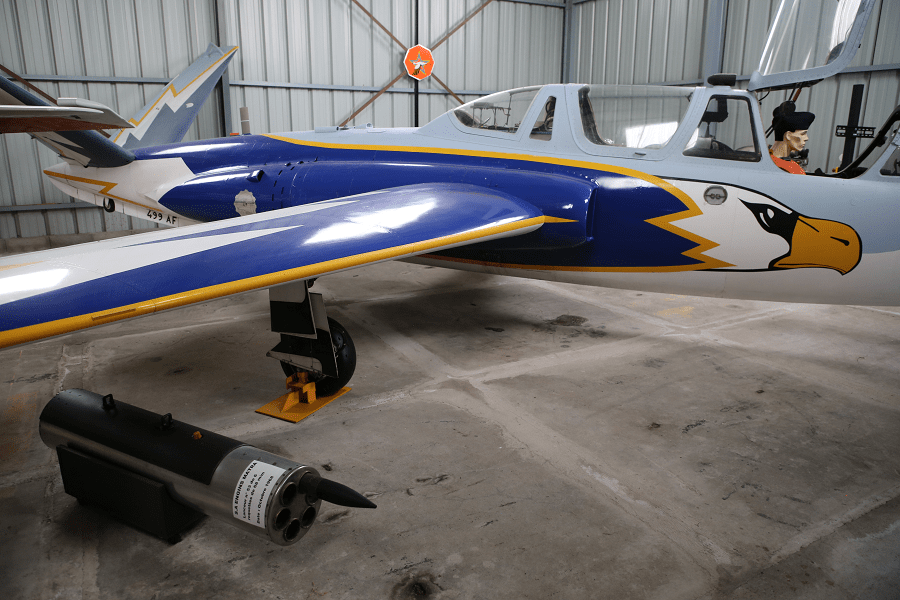Fouga CM.170 Magister №499 from the Aviation Museum (Montelimar) and Old wings (Toulouse)
During 1948, aircraft designers Pierre Mauboussin, Robert Castello, and Jacques Henrat at French aircraft manufacturer Fouga embarked upon the design of a new jet-propelled primary trainer aircraft, initially designated as the CM.130, intended for the French Air Force (Armée de l’Air, AdA) as a replacement for piston-engined Morane-Saulnier MS.475 aircraft.
The AdA reviewed the project and found that the aircraft lacked power from the two Turbomeca Palas turbojet engines selected for the aircraft; in response, Fouga proceeded to enlarge the basic design, which was equipped with the more powerful Turbomeca Marboré engine and retaining the distinctive butterfly tail of the Fouga CM.8 glider, which had been used by Fouga for jet engine research.
During December 1950, the AdA placed an order for three prototypes; on 23 July 1952, the first aircraft conducted its maiden flight. During June 1953, a pre-production batch of 10 aircraft were ordered, which was followed by an initial production order for 95 aircraft on 13 January 1954.
Fouga (also known as Air Fouga) was a French manufacturing company established by Gaston Fouga at Béziers during 1920. Originally specialising in the repair of railway rolling stock, the firm eventually became most noted for the aircraft it produced from its woodworking facilities at Aire-sur-l’Adour.
The most successful product to be created by Fouga was the CM.170 Magister, a postwar jet-powered military trainer aircraft derived from the firm’s experiences with sailplanes. Many of its features, such as its slender tapering wings, reflecting the company’s sailplane heritage. During May 1958, Fouga was acquired by rival French aircraft manufacturer Potez; the company’s former facilities at Toulouse continue to produce aircraft as a part of the multinational Airbus Group.














